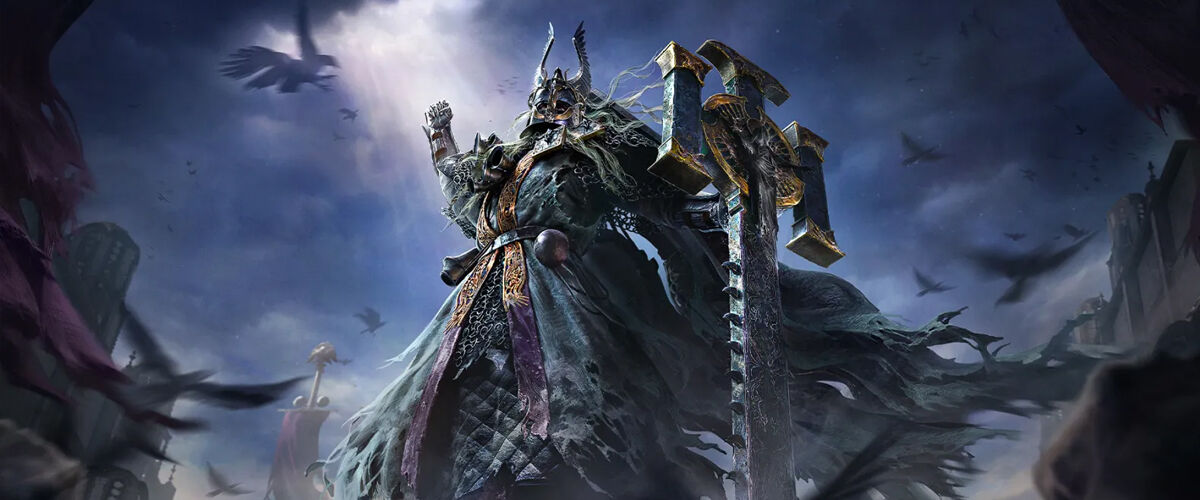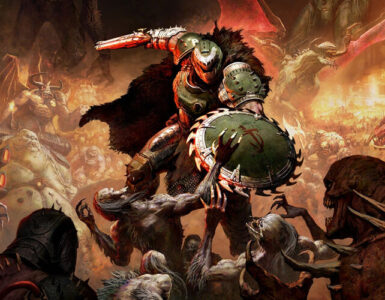When it was first released back in 2013, Grinding Gear Games’ free-to-play action role-playing game (ARPG) Path of Exile quickly built a reputation for being insanely complex, presenting an intricate mish-mash of systems upon systems, even to the point where an external Excel spreadsheet was needed to efficiently min-max (the process of allocating skill points essential to a character’s role and no points to other skills) characters to tackle its biggest challenges.
While this might have been a strong selling point for all the hardcore ARPG fans, its complexity unfortunately meant that newcomers to the genre were in for a tough and confusing time. To this day, the game remains a title that’s truly meant for avid fans of the genre and those willing to navigate its myriad of systems.
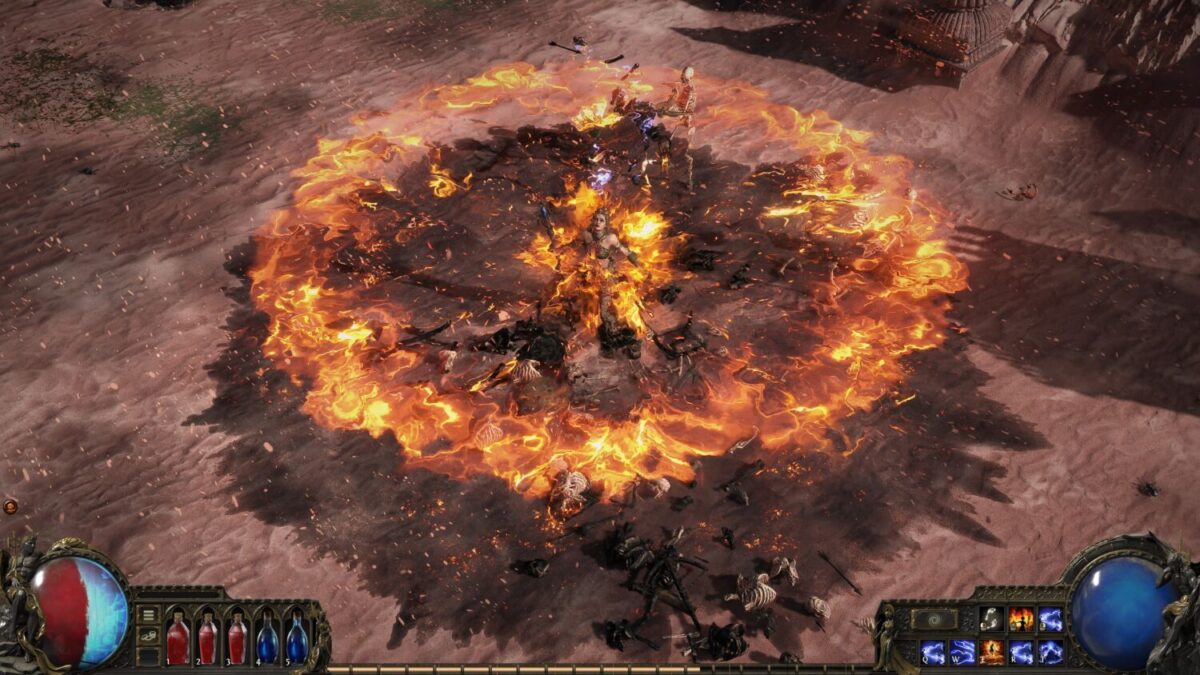
With its sequel, Path of Exile 2, Grinding Gear seems to understand that not everyone has the time or patience to juggle so many things at once, and takes on the gargantuan task of not only creating a sequel experience that could surpass its predecessor in every way, but also to streamline its systems to allow players of varying skill levels to enjoy in its experiences.
One thing has to be made clear though, is that even in its incomplete, Early Access state, and with all its added accessibility options in tow, Path of Exile 2 is still a massive, sprawling title that requires hundreds of hours of playtime to fully experience everything it has to offer. In this vein, this review only covers its main story campaign and not the extensive endgame content, of a massive map known as the Atlas, that kicks in once the credits roll.
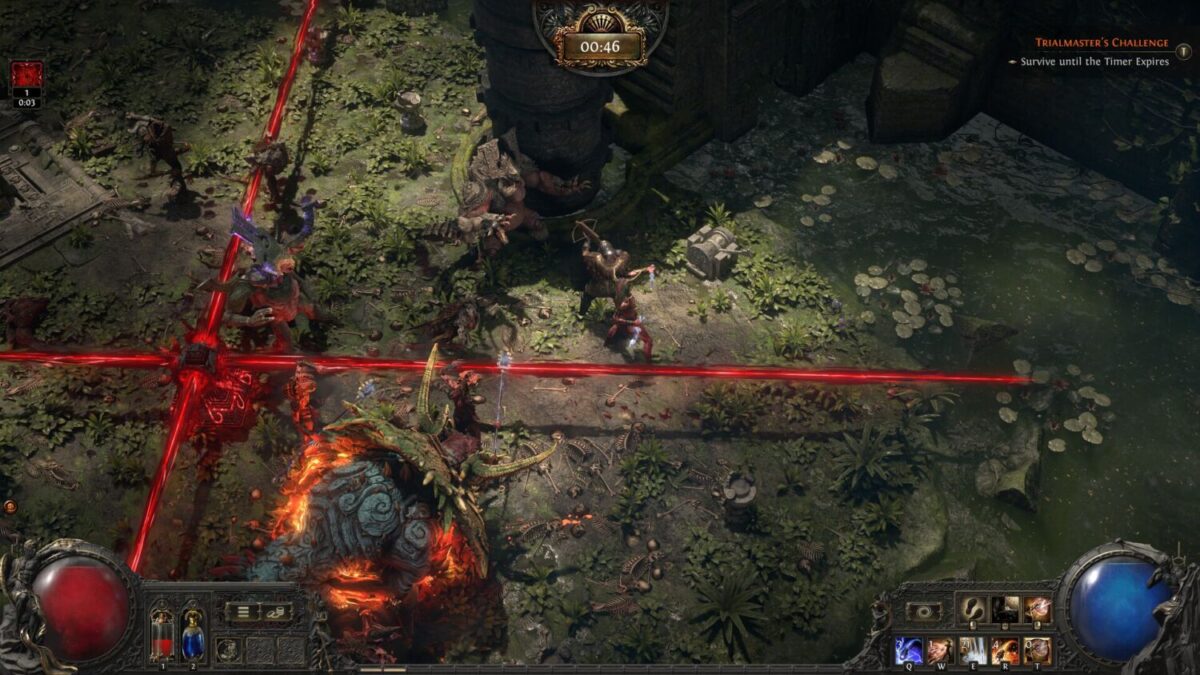
Speaking of its campaign, the game adopts a segmented approach during its early access period. Of the planned six-act campaign, only the first three are available during this period, with the remaining replaced by souped-up “Cruel” versions of each of the available three acts, providing scaled-up enemies for that increased challenge. Another thing to note is that players will not be able to jump into the endgame content immediately after finishing Act Three, and are required to replay the Acts in “Cruel” mode to progress further.
As an ARPG focused on killing mob after angry mob, it’s no surprise that storytelling isn’t its strongest point. Path of Exile 2 plays it safe in this department, presenting the usual tale of monsters being released into the world and the plight of mortals versus immortals. Set 20 years after the defeat of Kitava, the Insatiable and the events of the first game, things seemed to return to normalcy until an unspeakable evil is unleashed onto Wraeclast by Count Geonor of Ogham, sending the realm into turmoil once again.
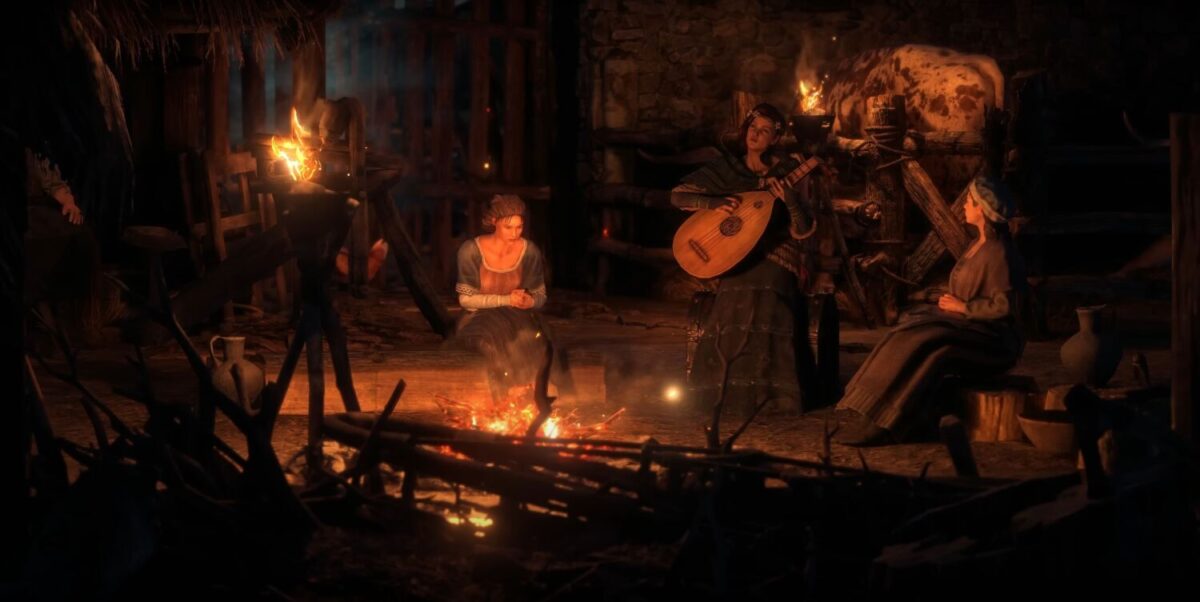
Players take on the role of a prisoner who narrowly escapes execution, travelling and fighting their way across different regions and encountering various characters and factions like Sekhema Asala and the Vaal, uncovering more about the source of the corruption known as the Beast and the mysterious Seed of Corruption. Although the game features an entirely new story, it’s still a direct sequel that ties into the events of the first game, so newcomers might understandably get lost at times with all the various terms, returning characters and the already well-established lore.
Thankfully, as with most games of this genre, the bulk of its enjoyment lies not in its story, but in its core gameplay loop, and here, Path of Exile 2 offers content in spades. To start, players have a choice between six main classes (with a total of 12 leading up to its full release), with archetypes ranging from genre staples like the tanky Warrior and the spell-bending Sorceress to less traditional ones like the agile Monk and minion-focused Witch.
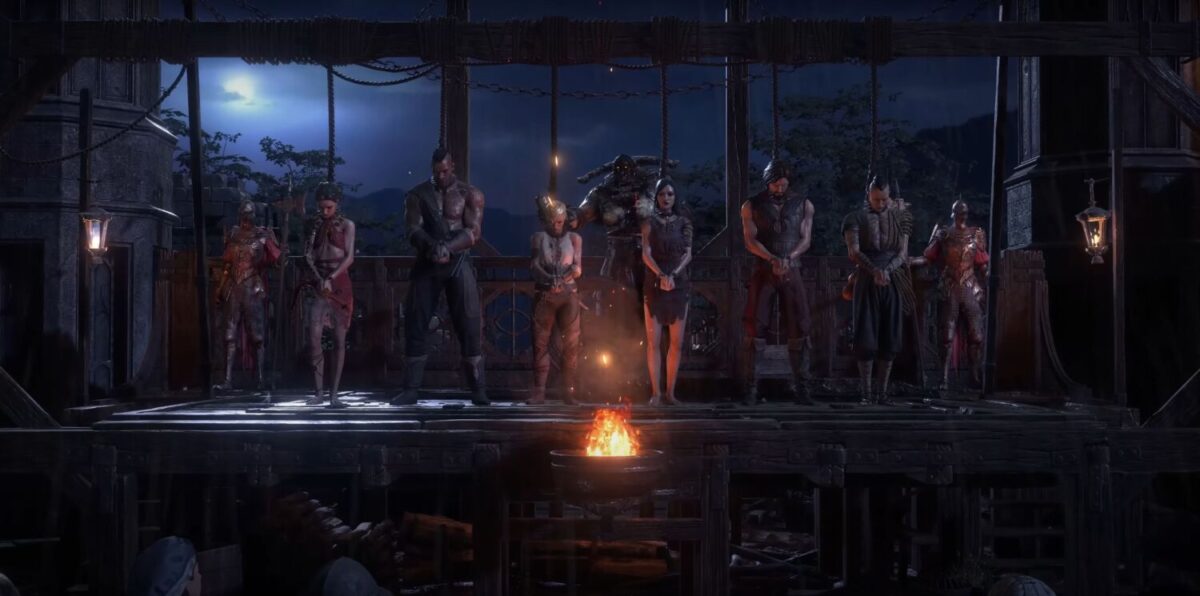
Unlike other ARPGs, the choice of character class can dramatically change the way the game is played. While more traditional classes play out largely like those seen in other titles, such as the Warrior, whose playstyle revolves around the tried and true method of charging into battle equipped with the heaviest armour possible, some classes really mix things up. The Witch, for example, heavily relies on her minions (which are permanent and respawn, for the most part) for the bulk of damage-dealing, spending most of the time in battle hanging back to deal ranged damage or summon additional timed minions. Meanwhile the agile Monk adopts a hit-and-run attacking style, dashing into combat to strike foes with a flurry of blows before making a hasty retreat to avoid retaliation.
Perhaps the most unique of all classes is the Mercenary, a ranged, crossbow-wielding class that fundamentally changes the way the game is played. By using this class, players essentially transform the game into a top-down twin-stick shooter, constantly swapping between different firing modes (simulating traditional assault rifle, shotgun and sniper-type weaponry of shooter games) to deal the most efficient amount of damage to enemies of varying types all while keeping out of striking distance. As such, this class becomes an excellent starting point for those more familiar with such action-focused games, to help ease into the complexities of an ARPG.
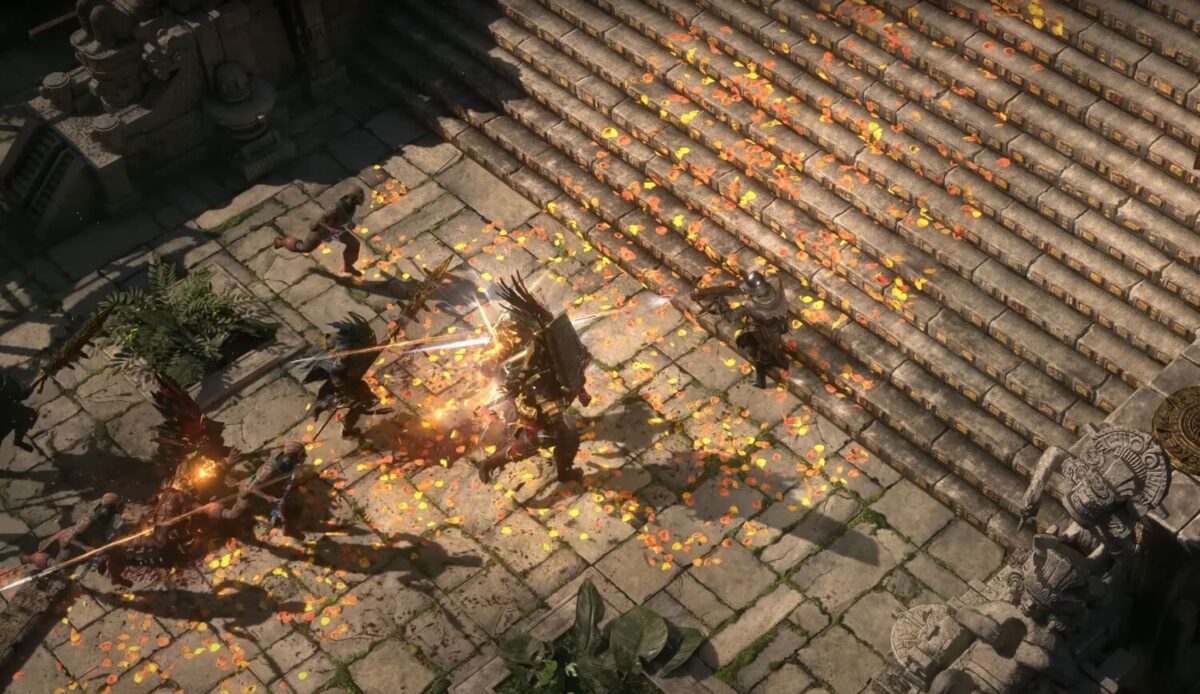
Furthermore, class diversity is also supplemented by the fact that players are free to mix elements of each class, provided they have the stats and skill points to do so, and as if that’s not enough, each class also has access to two “Ascendancies” (three total in the full release), or sub-classes that further specialises things down a certain playstyle. Even in its early stage, the six classes coupled with two Ascendancies for each offers a staggering amount of replayability and can undoubtedly fit the playstyles of any potential player.
Once a starting class is picked, it’s time to delve into the game’s main progression systems, and boy, is there a ton. For better or worse, the infamous spider-web-esque passive skill tree makes a return in all its complicated glory. If you thought the first game’s 1,325 skills were overwhelming, you’re in for a wild ride, as Path of Exile 2 turns this up a notch, with around 1,500 skills this time around. Fortunately, the game does recommend players down a certain branch depending on the chosen class, but at the end of the day, it’s left entirely up to the player to experiment and combine skills to form their ultimate build.
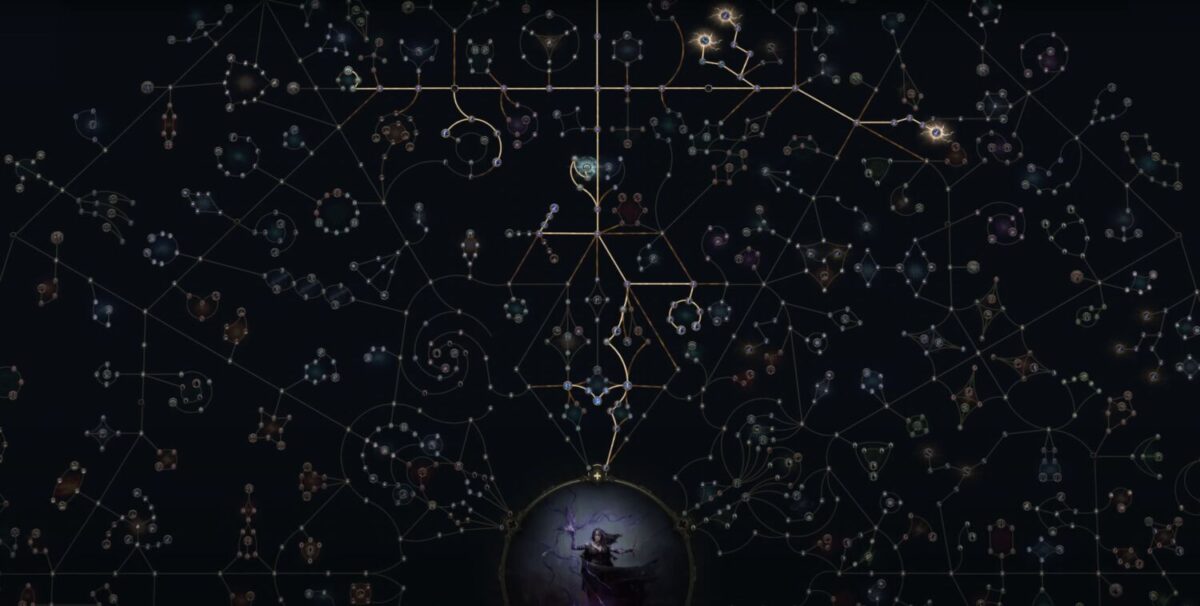
While active skills are usually earned through levelling up in most games, here these are found through looting in the form of gems. By finding blank gems, players can then engrave them to form active damage skills of varying levels, choosing between a wide variety of functions, like lobbing a timed incendiary bomb as a Mercenary or summoning different skeleton minion archetypes (warriors, snipers, bomb-throwers, etc) as a Witch. Class flexibility once again reigns supreme, with the game providing a list of recommended skills per class, but with no restrictions for mixing skills of other classes if a player so chooses, and if they are able, of course.
Complementing active skills are support gems, which function almost identically to skill gems in terms of how they are acquired and used, but instead enhance already owned skills with modifiers, with most offering pros and cons to the improvement. For instance, a support gem can improve an attack skill’s physical damage at the expense of dealing no elemental damage, or even enable minions to fight on after death for a limited time. Similarly, the game also provides suggestions for each owned skill to ensure maximum benefit of its effects, without too much of a downside.
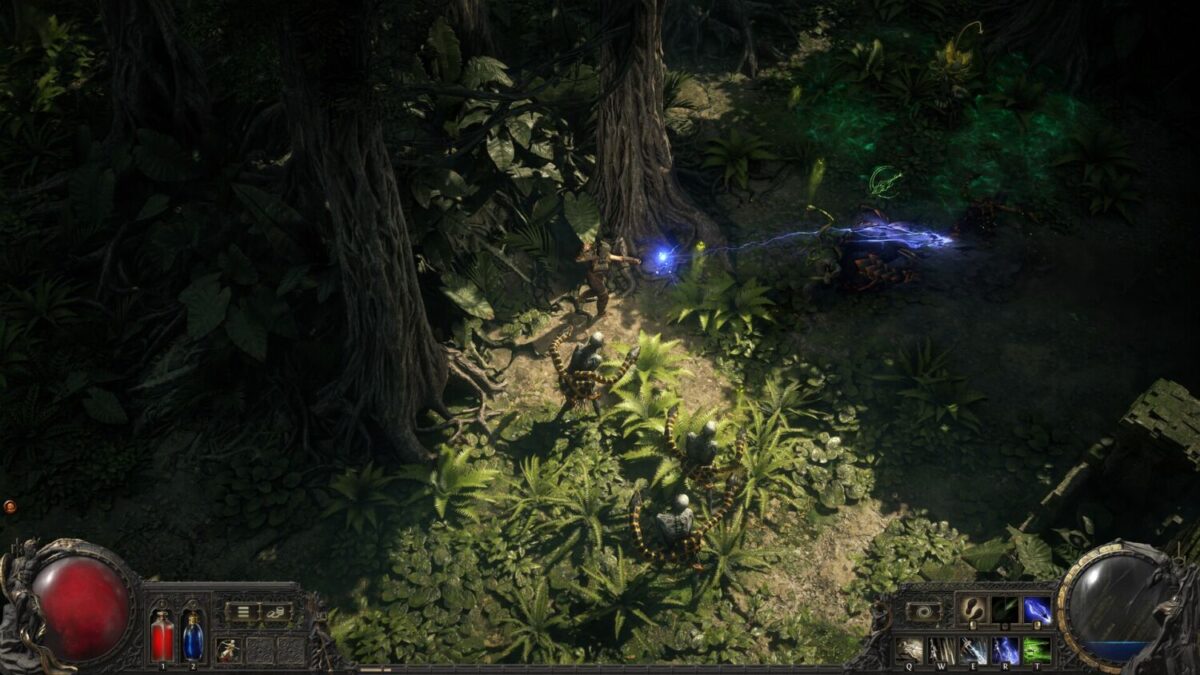
With progression systems out of the way (the major ones, at least), it’s time to delve into moment-to-moment combat and exploration. Players will travel between interconnected zones over the course of their journey, with each map being randomly generated, with each instance being reset and re-generated around 15 minutes after leaving it. A nice concept, that’s for sure, but it does come with its own frustrations, as having to re-explore already cleared areas during return trips quickly becomes tedious, considering how expansive each map is, and how they are all shrouded in an annoying fog-of-war. Thankfully, each map contains several checkpoints, which refill health and mana potions alongside respawning the player upon death, and with an upcoming patch, will also allow fast travel between them for easier exploration.
Now here comes the bread and butter of the title, its combat, and what’s on offer here, especially in this early stage, is already incredibly polished. Players will take on a diverse horde of around 400 monster types, from shambling zombies to freakish plant-like beasts that shoot poisoning darts, there’s no shortage of monstrosities to cull through. Enemies also largely attack in packs, meaning avoiding damage becomes equally important to dishing it out, and here lies the inclusion of a game-changing system (at least for ARPGs), the dodge roll.
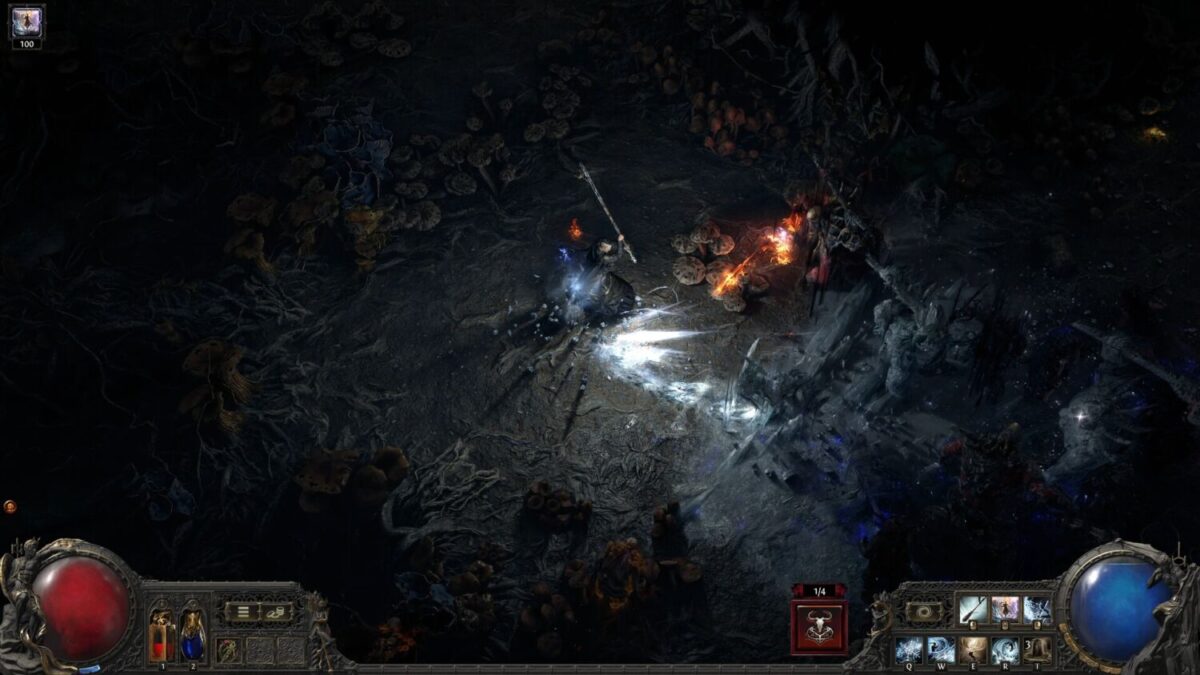
Yes, dodge rolls have been featured in other games of the genre, and might not seem like such a big deal, but here’s the kicker, dodge rolls in Path of Exile 2 have no cooldown. This fact fundamentally changes how combat operates, as since players can constantly roll without limitations, enemy behaviour had to be adjusted to suit, which turns fights into something similar to more action-focused twin-stick games, with larger boss enemy attacks having visible cones of damage displayed beforehand for players to roll out of the way accordingly. In action, combat becomes a fluid dance of rolling, striking and of course, frantic button-mashing that can make even experienced gamers break a sweat.
Speaking of bosses, the game features quite a number of them, 50 to be exact, and more to come once its full release approaches. These fights are always intense, with each not only looking increasingly more grotesque but also possessing different hard-hitting attack moves that can quickly drain a player’s health if they are not careful. Furthermore, each boss usually has a mob-summoning move, which fills up the arena with smaller creatures to deal with, and with the combination of mob hordes, flashy boss attack effects plus a player’s own barrage of strikes and spells, the screen can quickly become overwhelmed with particle effects, which has the often fatal side effect of losing track on one’s character amidst all the chaos. Cheap deaths are not only present, but plenty, so prioritising smaller minions becomes essential in preventing unmanageable situations.
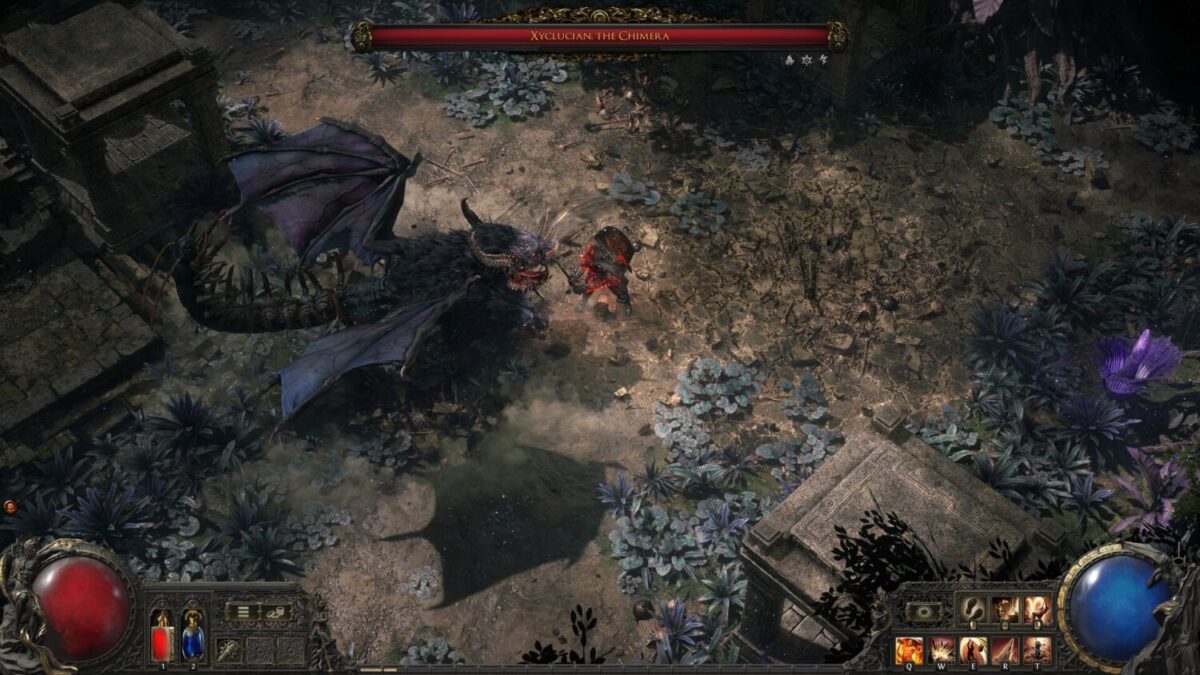
Rounding combat off is loot, an essential part of any ARPG, and here is where the game stumbles. Loot drops are incredibly stingy, especially so for new weapons, and annoyingly, there is no system in place to ensure that loot drops are specifically catered to a player’s chosen class, so prepare to see ample drops of unusable Monk staffs or Warrior shields while playing as a Witch, which really dampens the allure of loot. Further adding to the frustration is the painfully tiny inventory space, which cannot be increased (barring a certain skill from the Warrior class), which means players have to constantly endure the process of either dropping loot to make space or repeatedly teleporting back to town to sell unused gear. It’s these fundamental game systems that significantly pulls down an otherwise excellent gameplay experience.
With a game so focused on travelling between various locations to dispatch hordes of enemies, environmental design becomes rather important in ensuring players are constantly encountering different locations to avoid visual fatigue. While Path of Exile 2 offers increasingly fantastical locations as the game progresses, such as the sprawling Vastiri Desert in Act 2 or the almost Mayan-esque temples of the Utzaal Jungle in Act 3, the locations explored in the early parts of the game are significantly more dull in comparison, consisting of generic forests and damp, endless stretches of cave systems. In fact, most dungeons found throughout the game feel identical and while it might be too much to ask for every single location to feel vastly unique, it does eventually dampen that feeling of awe and discovery when a new temple just turns out looking like every other temple explored previously.
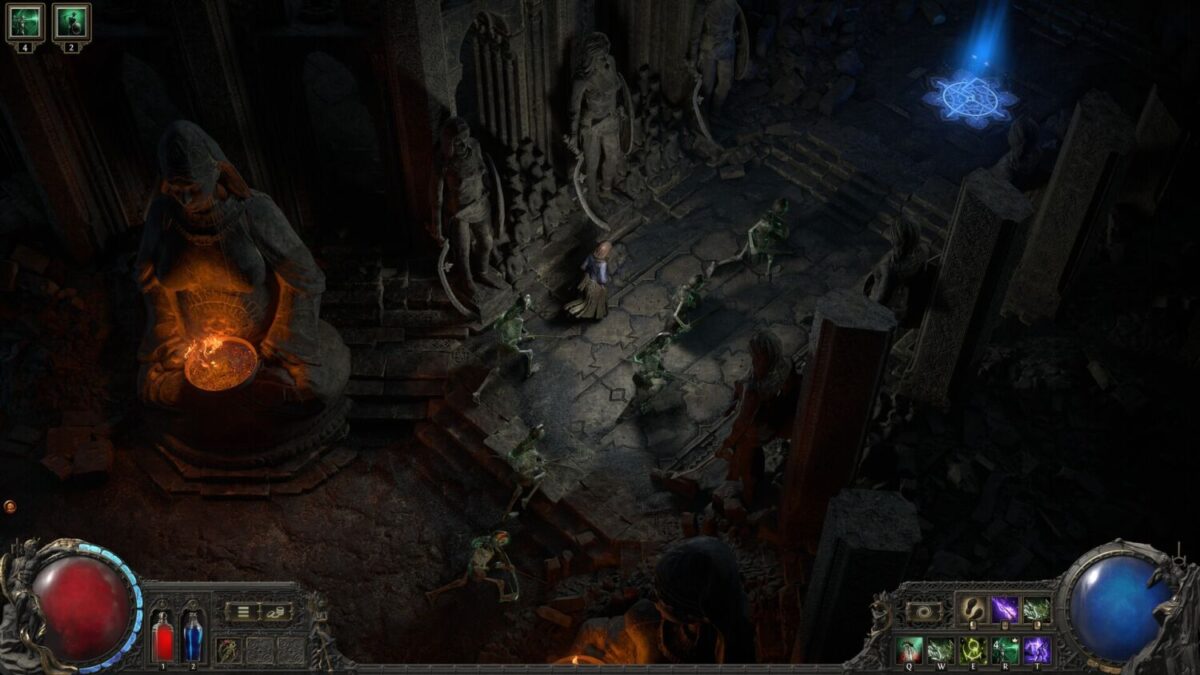
As with any free-to-play title, it’s important to list out how monetisation affects gameplay and if it’s, in fact, “pay to win”. Thankfully, Grinding Gear Games has adopted a rather fair system, providing options to shell out real-world cash in only two major departments, cosmetics and stash tabs, the latter being the purchase of additional space in the player’s stash that is collated across all created characters, which is not entirely necessary apart from the most hardcore organisers, which ultimately presents a very fair and unobtrusive monetisation system that’s a breath of fresh air in today’s video game landscape. Still, since this is Early Access, it remains to be seen if more egregious microtransactions will be added down the line. Also, it’s to be noted that the game adopts a paid Early Access format, with potential players needing to purchase a “supporter” pack to gain access to the title before its full, free release.
As it stands, Path of Exile 2 offers a barrage of content even in its early state (and as mentioned, we haven’t even touched on the expensive Atlas endgame, which promises to provide hundreds of additional gameplay hours), and with its immensely flexible systems in terms of character building and its wide variety of foes to vanquish, players are in for a wild ride, provided they can get over its head-scratching progression systems, that is. The game is not without its flaws and its painful lack of loot and places to store them can become a constant source of frustration that severely hampers enjoyment, but hopefully, these blemishes can be tweaked as it journeys through its Early Access period. Regardless, the future of the title remains bright as an expansive sequel for players to lose umpteen hours into.
GEEK REVIEW SCORE
Summary
Don’t be fooled by its Early Access tag as Path of Exile 2 is a massive ARPG with flexible character classes, a huge variety of enemies, and an equally sprawling skill tree, making it an adventure that players should be prepared to heavily invest in.
Overall
8/10-
Gameplay - 8/10
8/10
-
Story - 7/10
7/10
-
Presentation - 7.5/10
7.5/10
-
Value - 9.5/10
9.5/10
-
Geek Satisfaction - 8/10
8/10

